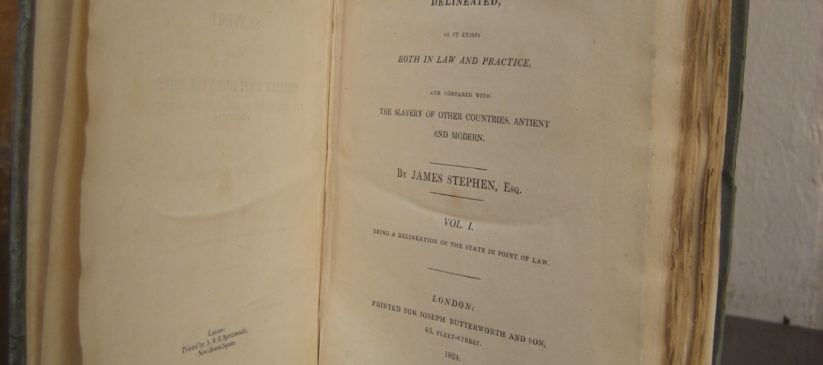Stephen’s Book

James Stephen lived in St. Kitts for eleven years. His experience here inspired his abolitionist beliefs. He provided much of the material that his brother –in-law, William Wilberforce used in his fiery parliamentary speeches on the topic. Stephen himself is regarded as the architect of the Slave Trade Act 1807 which ended the trade within the British Empire. His ideas were also behind the creation of the Slave Registry in the various British colonies. Knowing that the end of the trade could not be enforced, he argued that the Registry was required to ensure that Britain’s competitors did not receive money from British plantations through a black market in enslaved workers. Stephen’s next target was full emancipation. His two volume work entitled the Slavery of the British West India Colonies delineated published in 1824 was meant to strengthen the arguments of the Abolitionist Movement. The second volume has an appendix which contains a number of cases that highlighted the inhumanity of enslavement. The Betto Douglas Case is on page 430 while the story of Fahie and Orton then owned by Nathaniel Wells starts on page 442. The National Archives has a copy of these volumes however those who do not have the time to visit can access the second volume here